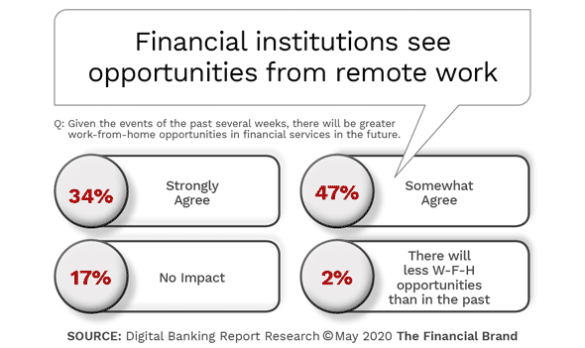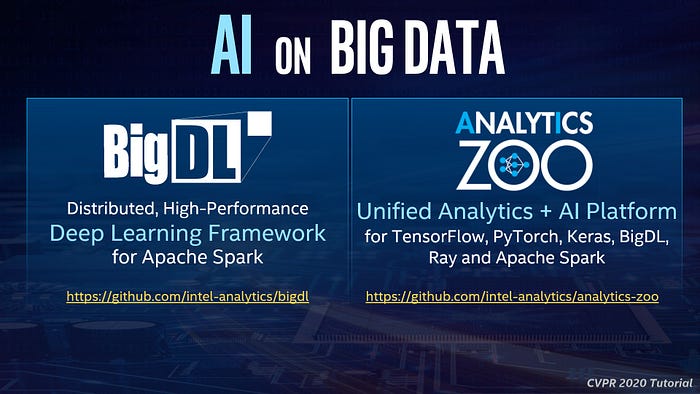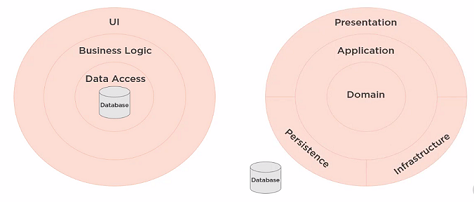Study Reveals a ‘Skills Gap’ That Jeopardizes Future of Banking Workforce

Over a period of only a couple months, entire workforces were required to
familiarize themselves with digital tools which never were needed in a
traditional work environment. At the same time, financial institutions were
required to connect with customers using mobile apps, online tools and digital
engagement capabilities that were foreign to many. The impact of these changes
was felt most by the employees who had been with their financial institution
the longest or were in areas of an organization that had not adjusted to
recent marketplace realities. Many financial institutions responded to
internal and external digital needs with mid-term solutions, understanding
that significantly more is needed. The impact of COVID-19 has forced banks and
credit unions to quickly assess the digital competency of their teams, while
looking to internal training and the marketplace to provide longer term
solutions. This comes at a time when every industry is looking to address a
massive digital and technology skills gap. The research from the Digital
Banking Report found that 72% of financial services executives believed there
was either a moderate (37%) or significant (35%) skills gap. Less than three
in ten thought there was only a minor or no threat.
Deployment and Productionization of Machine Learning Models
A machine infrastructure encompasses almost every stage of the machine
learning workflow. To train, test, and deploy machine learning models you need
services from data scientists, data engineers, software prog engineers, and
DevOps engineers. The infrastructure allows people from all these domains to
collaborate and empower them to associate for an end to end execution of the
project. Some examples of tools and platforms are AWS(amazon web services,
Google Cloud, Microsoft Azure machine learning studio, Kubeflow:
Machine-Learning Toolkit for Kubernetes. Architecture deals with the
arrangement of these components(things discussed above) and also takes care of
how they must interact with them. Think of it as building a machine learning
home where bricks, concrete, iron, are integral to the infrastructure,
applications, etc. The architecture shapes our home by using these materials.
Similarly, the architecture here provides that interaction among these
components. ... In machine learning, for the given data different models are
built and we keep track through version control tools like DVC and Git.
Version control will keep track of changes made to the model at each stage and
keep a repository.
Seamlessly Scaling AI for Distributed Big Data

Conventional approaches usually set up two separate clusters, one dedicated to
Big Data processing, and the other dedicated to deep learning (e.g., a GPU
cluster), with “connector” (or glue code) deployed in between. Unfortunately,
this “connector approach” not only introduces a lot of overheads (e.g., data
copy, extra cluster maintenance, fragmented workflow, etc.), but also suffers
from impedance mismatches that arise from crossing boundaries between
heterogeneous components (more on this in the next section). To address these
challenges, we have developed open source technologies that directly support
new AI algorithms on Big Data platforms. ... Before diving into the technical
details of BigDL and Analytics Zoo, I shared a motivating example in the
tutorial. JD is one of the largest online shopping websites in China; they
have stored hundreds of millions of merchandise pictures in HBase, and built
an end-to-end object feature extraction application to process these pictures
(for image-similarity search, picture deduplication, etc.). While object
detection and feature extraction are standard computer vision algorithms, this
turns out to be a fairly complex data analysis pipeline when scaling to
hundreds of millions pictures in production, as shown in the slide below.
‘Undeletable’ Malware Shows Up in Yet Another Android Device

While it was not immediately obvious that the trojan was present on the
device, researchers were able to detect it given its similarity to another
malware downloader. “Proof of infection is based on several similarities to
other variants of Downloader Wotby,” Collier explained. “Although the infected
Settings app is heavily obfuscated, we were able to find identical malicious
code. Additionally, it shares the same receiver name: com.sek.y.ac; service
name: com.sek.y.as; and activity names: com.sek.y.st, com.sek.y.st2, and
com.sek.y.st3.” The app did not trigger any malicious activity when
researchers analyzed the device, which they expected; however, the smartphone
they examined also did not have a SIM card installed, which also could affect
how the malware behaves, he said. “Nevertheless, there is enough evidence that
this Settings app has the ability to download apps from a third-party app
store,” he wrote. “This is not okay.” The other malware variant came
preinstalled in the UL40’s Wireless Update app, which functions as the
device’s main way of updating security patches, the operating system and other
apps.
6 Coding Books Every Programmers and Software Developers should Read

Refactoring, Improving the design of existing code: This book is written
in Java as it’s the principal language, but the concept and idea are
applicable to any Object-oriented language, like C++ or C#. This book will
teach you how to convert a mediocre code into a great code that can stand
production load and real-world software development nightmare, the CHANGE. The
great part is that Martin literally walks you the steps by taking a code you
often see and then step by step converting into more flexible, more usable
code. You will learn the true definition of clean code by going through his
examples. ... The Art of Unit Testing: If there is one thing I would
like to improve on projects, as well as programmers, are their ability to unit
test. After so many years or recognition that Unit testing is must have
practiced for a professional developer, you will hardly find developers who
are a good verse of Unit testing and follows TDD. Though I am not hard on
following TDD, at a bare minimum, you must write the Unit test for the code
you wrote and also for the code you maintain. Projects are also not different,
apart from open source projects, many commercial in-house enterprise projects
suffer from the lack of Unit test.
How to become an effective software development manager and team leader
I learn by doing, and I learn from others. So first of all, I don't think
anyone is born with these skills. I mean, some people are better communicators
than other people, but a lot of the things that you actually have to learn
like how to manage somebody, how to... the good news is it can be learned and
the way I learned it is by doing and getting better every time I did it. But I
was also fortunate that I was able to surround myself with really great people
every step along the way, both in Drupal and at Acquia frankly. So surrounding
yourself with experienced managers, or experienced leaders is very helpful and
fast tracks that learning, right? ... I think about it almost everyday
actually. But I prioritize it lower than a lot of other things that I do.
Literally, when I wake up I try to think, "What should I do today that has the
biggest impact on Drupal and Acquia?" It's almost never coding for me,
unfortunately. I secretly hope it would be one day it's like, "Wow, go code.
Go write this piece of code." But it usually involves unblocking other people
or teams, or helping to fundraise for the Drupal Association right now. So the
coding is often reserved for evenings and weekends. I like to dabble with code
still.
Whiteapp ASP.NET Core using Onion Architecture

It is Architecture pattern which is introduced by Jeffrey Palermo in 2008,
which will solve problems in maintaining application. In traditional
architecture, where we use to implement by Database centeric architecture.
Onion Architecture is based on the inversion of control principle. It's
composed of domain concentric architecture where layers interface with each
other towards the Domain (Entities/Classes). Main benefit of Onion
architecture is higher flexibility and de-coupling. In this approach, we can
see that all the Layers are dependent only on the Domain layer (or sometimes,
it called as Core layer). ... Testability: As it decoupled all layers, so
it is easy to write test case for each Components; Adaptability/Enhance:
Adding new way to interact with application is very easy;
Sustainability: We can keep all third party libraries in Infrastructure layer
and hence maintainence will be easy; Database Independent: Since database
is separated from data access, it is quite easy switch database
providers; Clean code: As business logic is away from presentation layer,
it is easy to implement UI;
In the age of disruption, comprehensive network visibility is key

In an age of dynamic disruption, IT is increasingly challenged to maintain
optimal service delivery, while implementing remote working at an
unprecedented scale. It’s not surprising, then, that nearly 60 percent of
study respondents cite the need for greater visibility into remote user
experiences. The top challenge for troubleshooting applications is the ability
to understand end-user experience (nearly 47 percent). “As remote working
becomes the new norm, IT teams are challenged to find and adapt technologies,
such as flow-based reporting to manage bandwidth consumption, VPN
oversubscription and troubleshooting applications. To guarantee the best
performance and reduce cybersecurity threats, increasing network visibility is
now a must for all businesses,” said Charles Thompson, Senior Director,
Enterprise and Cloud, VIAVI. “By empowering NetOps, as well as application and
security teams with network visibility, IT can mitigate the impact of
disruptive migrations, incidents and new technologies like SD-WAN to achieve
consistent operational excellence.”
Prepare for Artificial Intelligence to Produce Less Wizardry

“Deep neural networks are very computationally expensive,” says Song Han, an
assistant professor at MIT who specializes in developing more efficient forms
of deep learning and is not an author on Thompson’s paper. “This is a critical
issue.” Han’s group has created more efficient versions of popular AI
algorithms using novel neural network architectures and specialized chip
architectures, among other things. But he says there is a “still a long way to
go,” to make deep learning less compute-hungry. Other researchers have
noted the soaring computational demands. The head of Facebook’s AI research
lab, Jerome Pesenti, told WIRED last year that AI researchers were starting to
feel the effects of this computation crunch. Thompson believes that, without
clever new algorithms, the limits of deep learning could slow advances in
multiple fields, affecting the rate at which computers replace human tasks.
“The automation of jobs will probably happen more gradually than expected,
since getting to human-level performance will be much more expensive than
anticipated,” he says.
Ransomware Characteristics and Attack Chains – What you Need to Know about Recent Campaigns

Ransomware is a type of malware that prevents users from accessing their
system or personal files and demands a “ransom payment” in order to regain
access. There are two types of campaigns for ransomware “Human-operated” and
“Auto-spreading”, this article focusing on the human-operated campaigns.
Human-operated campaigns tend to have common attack patterns which include:
Gaining initial access, credential theft, lateral movement and persistence.
For many of the human-operated campaigns, typical access comes from RDP brute
force, a vulnerable internet-facing system, or weak application settings. Once
attackers have gained access they can deploy a plethora of tools to get user
credentials. After gaining credentials lateral movement takes place with
either deploying a widely known commercial penetration testing suite called
Cobalt Strike, changing settings of the WMI (Windows Management Instrument) or
abusing management tools with low-level privilege. Finally, attackers want to
keep a connection and make it persistent; this is done by creating new
accounts, making GPO (Group Policy Object) changes, creating scheduled tasks,
manipulating service registration, or by deploying shadow tools.
Quote for the day:
No comments:
Post a Comment